- Narco mantas, banners with messages created by the cartels, were seen in Culiacán, Mexico, on Tuesday following the kidnapping of 66 people.
- The banners were supposedly signed by El Chapo’s son, Iván Archivaldo, and his cartel claimed responsibility for the mass kidnappings.
- He said the kidnappings were in response to a gang accused of committing robberies, home invasions and extortion.
<!–
<!–
<!– <!–
<!–
<!–
<!–
A faction of the Sinaloa Cartel led by the sons of Joaquín ‘El Chapo’ Guzmán reportedly claimed responsibility for the kidnapping of 66 people this weekend in the northern Mexican city of Culiacán.
A series of narco banners were found hanging from four overpasses and highway bridges ahead of Tuesday morning rush hour traffic. The banners insisted that the kidnappings were in response to a series of criminal incidents orchestrated by a home invasion gang, which some claim is led by law enforcement officers.
Each exhibit featured a banner with a message signed with the initials of El Chapo’s son, Iván Archivaldo Guzmán, and had photographs of the gang’s four leaders.
‘This is going to happen to all the thieves in Sinaloa so that they feel what families feel when their homes are stolen and their privacy invaded,’ the narco banner said in Spanish. ‘ROBBERY, KIDNAPPING, EXTORTION OR (collection of money for the right to operate a business) are not allowed here.
‘You already know what the principles of the organization are, be clear about it. Relatives of people involved in these crimes avoid having a bad time and report any act of this nature. ATTENTION: IAG.’
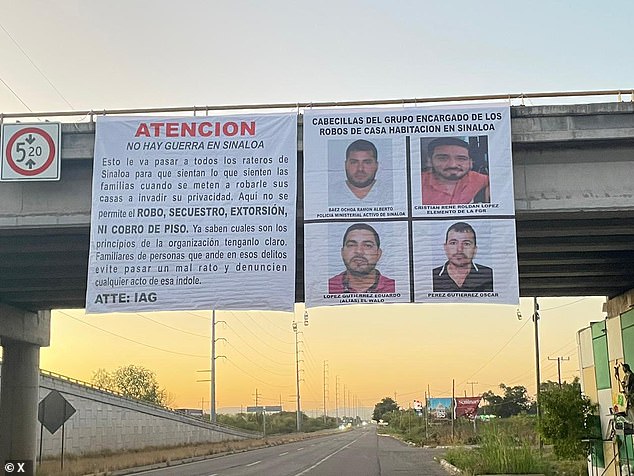
Narco mantas were spotted on Tuesday in the Mexican city of Sinaloa and targeted the kidnapping of 66 people between Friday and Saturday.
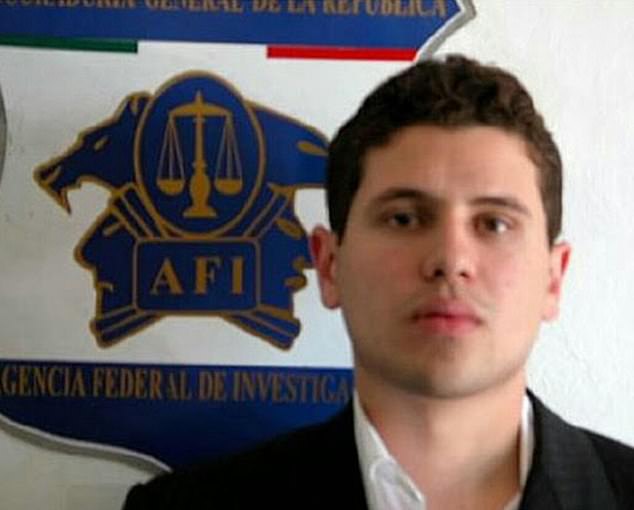

The banner was signed with the initials of Joaquín ‘El Chapo’ Guzmán’s son, Iván Archivaldo Guzmán, and supposedly claimed responsibility for the mass kidnappings.
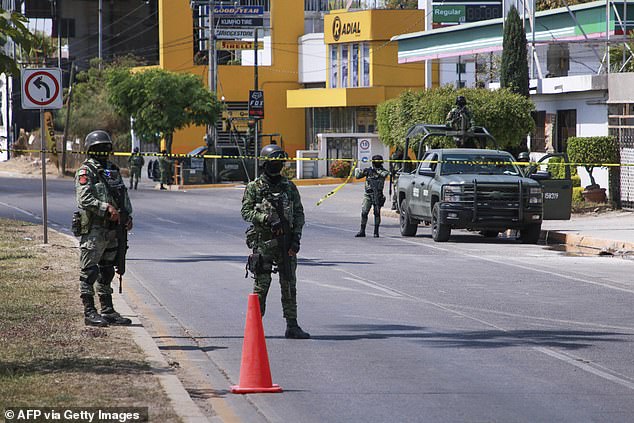

The Mexican army guards a street in Culiacán, Sinaloa, on Monday, a day after a member of the National Guard was killed in a shootout during an operation that allowed 16 people who had been kidnapped to be rescued.
The cartel accused Ramón Báez, a member of the Sinaloa police, and Cristián Roldán, an agent assigned to the Attorney General’s Office of the State of Sinaloa, of leading a group of invaders that targeted residences throughout the state.
The kidnappings occurred between Friday and Saturday, according to the Attorney General’s Office of the State of Sinaloa.
The group freed 42 people on Saturday and another 16 were rescued on Sunday.
Also on Sunday, a member of Mexico’s national guard died in the region while participating in rescue efforts in the capital of the state of Sinaloa.
Eight of the kidnapping victims remained missing as of Tuesday afternoon.
None of the freed people agreed to formally accuse the kidnappers, said Sinaloa Public Security Secretary Gerardo Mérida.
Authorities did not say who was behind the kidnappings, which occurred after the murder Thursday of three people in the state’s Badiraguato region.
Local media initially reported that the kidnappings were related to an internal conflict between ‘Los Chapitos’, led by El Chapo’s three sons, and the other part of the cartel, commanded by Ismael ‘El Mayo’ Zambada, who co-founded the organization with El Chapo.
El Chapo is a former Mexican drug trafficker and one of the most prolific drug traffickers in history. He is currently serving a life sentence in the United States.
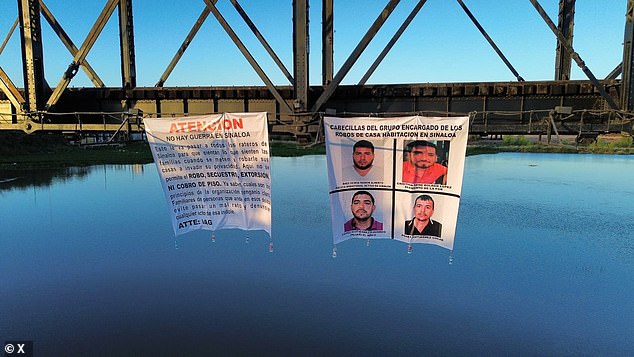

Narco banners were found in the Mexican city of Culiacán and showed the faces of four gang leaders linked to an alleged wave of robberies and extortion.
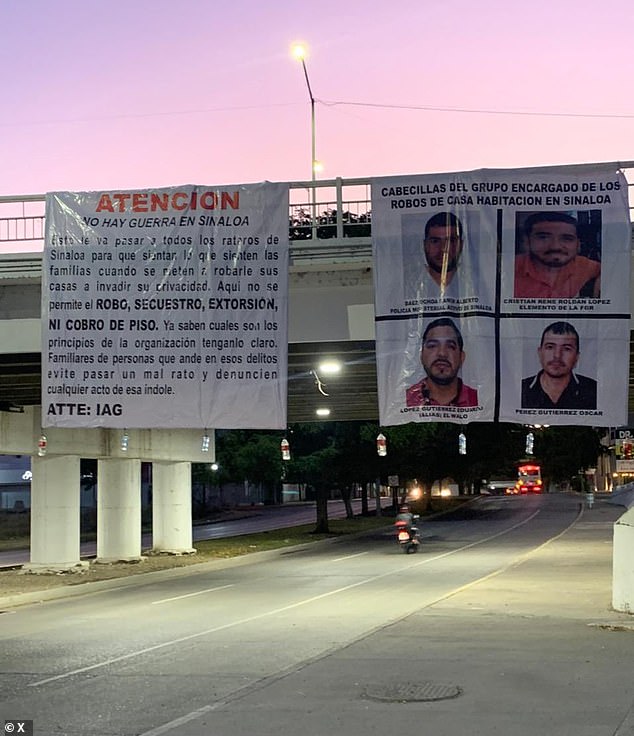

The Mexican authorities have not attended to the narco banners found on Tuesday in Culiacán, Sinaloa.
Iván Archivaldo Guzmán, his brother Jesús Alfredo Guzmán and his half-brother Joaquín Guzmán have been indicted on drug charges by federal grand juries in New York and Illinois.
His brother, Ovidio Guzmán, was captured in January 2023 and extradited to Chicago eight months later.
The Guzmán brothers are accused of shipping chemicals needed to produce fentanyl from China to Mexico and coordinating the trafficking of the deadly drug from Mexico to the United States.
The DEA alleges that the Sinaloa Cartel and its rival, the Jalisco New Generation Cartel, are responsible for flooding the streets of the United States with fentanyl.

